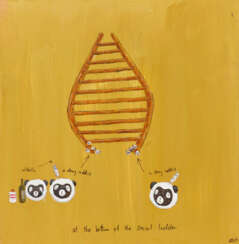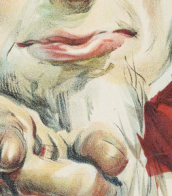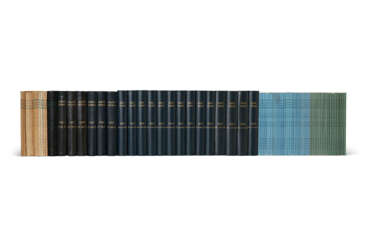socialism

Ralph Waldo Emerson was an American philosopher, lecturer and poet, one of the most prominent thinkers and writers in the United States, and the originator of transcendentalism.
Ralph studied at Boston State Latin School and then at Harvard College (later Harvard University), began to preach, but soon doubted his chosen path and resigned his ministry. Emerson went to Europe, where new acquaintances and knowledge led him to new thoughts, and, returning to the United States in 1833, he began writing his famous book "Nature", where he first formulated a philosophy called transcendentalism. Soon other thinkers rallied around him, forming a group of like-minded thinkers.
In the essay "Nature," published in 1836, and in the following works, "The American Scholar" and "An Address in the School of Theology," Emerson consistently developed his ideas. Emerson's doctrine of the self-sufficiency and self-reliance of the individual stems from his view that a person need only look into his own heart to receive the spiritual guidance that has hitherto been the prerogative of the official churches. One must then have the courage to be oneself and trust the inner power within oneself, living one's life according to the commandments one has intuitively derived. These thoughts are not new, but Emerson put them in imaginative and accessible language.
Emerson's speeches led to his being ostracized at Harvard for many years. However, the informal Transcendental Club, founded in 1836, was joined and supported by his young students. The world fame of the brilliant thinker Emerson brought his "Essays" in two volumes, published in 1841 and 1844. As the main representative of transcendentalism, Emerson gave direction to the religious, philosophical and ethical movement, which above all emphasized belief in the spiritual potential of each person.
A later work of confession, The Conduct of Life (1860), demonstrates the author's developed humanism and full awareness of human limitations. The voluminous collection of poems cemented Emerson's reputation as a major American poet.

.jpg)
Gerhard Marcks was a German artist, known primarily as a sculptor, but who is also known for his drawings, woodcuts, lithographs and ceramics.


Jim Avignon, born Christian Reisz, is a German contemporary artist known for his bold, colourful and pop-inspired works. He has adopted a pseudonym to separate his creative persona from his everyday life.
Jim Avignon's art often incorporates elements of street art, graffiti and cartoon aesthetics. He is known for his playful and satirical approach to exploring themes such as consumerism, popular culture and the art world itself. His work is characterised by bright colours, simplistic forms and a distinctive graphic style that is both accessible and visually affecting.
In addition to his studio practice, Avignon is active in the art and music scenes, collaborating with musicians, DJs and performers. He has been associated with the Lowbrow art movement and has exhibited his work internationally, gaining recognition for his distinctive style and energetic artistic presence.
His ability to bridge the gap between visual art and popular culture has made him a prominent figure in contemporary art.


Jim Avignon, born Christian Reisz, is a German contemporary artist known for his bold, colourful and pop-inspired works. He has adopted a pseudonym to separate his creative persona from his everyday life.
Jim Avignon's art often incorporates elements of street art, graffiti and cartoon aesthetics. He is known for his playful and satirical approach to exploring themes such as consumerism, popular culture and the art world itself. His work is characterised by bright colours, simplistic forms and a distinctive graphic style that is both accessible and visually affecting.
In addition to his studio practice, Avignon is active in the art and music scenes, collaborating with musicians, DJs and performers. He has been associated with the Lowbrow art movement and has exhibited his work internationally, gaining recognition for his distinctive style and energetic artistic presence.
His ability to bridge the gap between visual art and popular culture has made him a prominent figure in contemporary art.





Nathaniel Hawthorne is an American writer and author.
Hawthorne is a recognized short story writer and a master of allegorical and symbolic narrative. One of the first fiction writers in American literature, he is best known for his works The Scarlet Letter (1850) and The House of Seven Gables (1851). Hawthorne's artistic works are considered part of the American Romantic movement and, in particular, of so-called dark Romanticism, a popular mid-19th-century fascination with the irrational, the demonic, and the grotesque.



Theo van Doesburg, real name Christian Emil Marie Küpper, is a Dutch painter, architect and sculptor, art theorist, co-founder of the Style Group and of Neoplasticism.
Theo van Doesburg co-founded with Piet Mondrian the De Stijl abstract art movement. The basis of van Doesburg's views was the attempt to reduce all forms of objective harmony in a work of art to certain geometric elements. These new principles soon had a significant influence on the development of architecture, literature, graphics and music.



Ewald Wilhelm Hubert Mataré was a German painter and sculptor, who dealt with, among other things, the figures of men and animals in a stylized form.


Friedensreich Regentag Dunkelbunt Hundertwasser was an Austrian visual artist and architect who also worked in the field of environmental protection.
Hundertwasser stood out as an opponent of "a straight line" and any standardization, expressing this concept in the field of building design. His best known work is the Hundertwasserhaus in Vienna, which has become a notable place of interest in the Austrian capital, characterised by imaginative vitality and uniqueness.








































![[Колокол: Журнал социального, политического и литературного развития России]. Kolokol (la Cloche). Revue du développement social, politique et littéraire en Russie.](/assets/image/picture_2303492/cd3f1/xbqhtq-8d6mjeitle3wlup8uc8vfbvv8qlrqlawtwv2j1erjfvmybflvrpm39kq1659663048jpg__fix_374_244.jpeg)
![[Колокол: Журнал социального, политического и литературного развития России]. Kolokol (la Cloche). Revue du développement social, politique et littéraire en Russie.](https://veryimportantlot.com/assets/image/picture_2303492/cd3f1/xbqhtq-8d6mjeitle3wlup8uc8vfbvv8qlrqlawtwv2j1erjfvmybflvrpm39kq1659663048jpg__fix_374_244.jpeg)
































